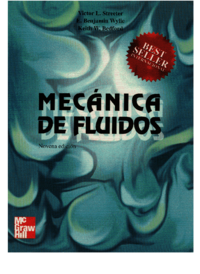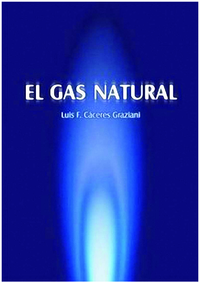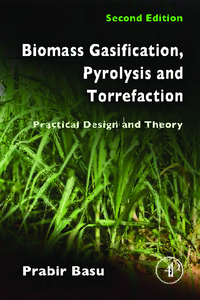Categoría "Energia"
Se han encontrado 76 Coincidencias
INTRODUCCION A LA TERMODINAMICA CON ALGUNAS APLICACIONES DE INGENIERIA
84 Visitas | 122 Descargas | 2014-06-09 19:44:22 | raulito
Esta es la primera edición de “Introducción a la Termodinámica”, resultado de las modificaciones y correcciones introducidas a la versión preliminar, o edición cero. Se ha dividido el tercer capítulo que trata del Primer Principio de la Termodinámica en dos: el capítulo 3 que concentra las bases del Primer Principio y algunas de sus aplicaciones inmediatas, y el capítulo 4, que trata otras aplicaciones y consecuencias del Primer Principio. La razón de este cambio es que pienso que tal como estaba diagramado en la versión preliminar el capítulo 3 era demasiado largo, por lo que decidí dividirlo en dos. Asimismo, se han desarrollado algo mas los contenidos del capítulo sobre Sistemas Heterogéneos, agregando mayor cantidad de información que espero contribuya a una mejor comprensión del equilibrio líquido-vapor. Se han revisado y corregido errores que se habían deslizado en la versión preliminar, por los que pido disculpas a los pacientes lectores. Aprovecho para agradecer la colaboración de los que han advertido esos errores y me los han comunicado. Se ha intentado mejorar la calidad gráfica de las ilustraciones, tratando de hacerlas mas claras y reproducibles. También se han usado técnicas de compresión para reducir el tamaño de los archivos y facilitar su descarga desde Internet, resultando con un volumen mucho menor a pesar de haberse incrementado los contenidos con respecto a la edición cero.

Combined Power and Process. An Exergy Approach
65 Visitas | 78 Descargas | 2014-07-29 17:07:31 | raulito
The main feature of this second edition is a rewrite of the chapters on fuel cells, recognizing the rapid advance of the technology. The equilibrium theory is given in much greater detail, and leads to a modified definition of fuel chemical exergy (reflects on Chapters 1,3, and 6). Moreover, the origin of fuels in photosynthesis is discussed as of interest in its own right, and as an illustration of the separation of work and heat in equilibrium and near-equilibrium chemical reactions. Both equilibrium and practical fuel cells conform to the latter description. Combustion is a far from equilibrium reaction, which precludes electrochemistry, destroys the Gibb’s potential completely, and leaves a variable residue of Carnot limited energy (thermo-mechanical exergy), depending on the arrangement of the combustion equipment.

Combined Heating, Cooling & Power Handbook: Technologies & Applications: An Integrated Approach to Energy Resource Optimization
57 Visitas | 82 Descargas | 2014-07-29 17:09:46 | raulito
For several decades, we have seen dramatic fluctuations in fuel and electricity prices accompanied by real and perceived uncertainty about energy availability. These conditions, and the resultant public policy initiatives they have spawned, have promoted investment in energy efficiency. The energy efficiency industry has had its fits and starts, but over time it has steadily increased our overall resource utilization efficiency. The evolving deregulated energy market has opened some opportunities and closed others. However, the dynamics and complexity of utility deregulation has also led some consumers to delay acting on energy efficiency initiatives until the market matures. Environmental regulatory intensity has also fluctuated, but generally the trend has also been toward increasing incentive to reduce pollution, notably air emissions associated with energy conversion and consumption. Concerns over environmental protection, national energy security, and reliance on imported oil and nuclear power have spawned many energy regulations, utility sponsored demand-side management programs, and other public policy initiatives. There is a pervasive feeling among many that resources such as energy, water, and clean air remain undervalued. The reasoning is that the full range of external cost factors – security, public health, and environmental damage mitigation to name a few – have not been captured, or monetized, through the combined impact of market price and regulation. Hence, price signals may still not match the true cost benefits of resource conservation and environmental protection. As recently as one-half century ago, low market prices, subsidies promoting increased energy use, and widespread disregard for environmental protection led to market decisions that were generally both polluting and energy inefficient. Today, market pricing and public policy signals generally encourage energy efficiency and environmental protection. While these efforts have perhaps not succeeded to the extent warranted, they are certainly much more mainstream than in the past. Much of the potential for conservation of resources, dramatically increased energy efficiency, and decreased pollution still lies ahead. Increased vehicular efficiency, expansion of renewable resource utilization, cogeneration technology, and a litany of other energy efficiency improvements are well within our grasp, requiring only modest additional shifts forward in public policy. While public consciousness and associated policies are certainly needed, within current economic and regulatory conditions, much can be gained by simply pursuing economic efficiency. Therefore, while the author honors past public policy accomplishments and acknowledges the need for more, this book is not intended to promote energy resource efficiency from a socio/ethical standpoint. In its time, one-half century ago, Rachel Carson’s Silent Spring was perhaps the only viable route to elevating the public consciousness toward environmental protection. Today, there are sufficient commercially available technologies and mechanisms in place to achieve some of these ends through pursuit of economic efficiency. What is needed to more fully capture this potential is a better road map. The purpose of this book is to provide such a road map. While the author wishes to facilitate and encourage commercial, industrial, and institutional facilities to become more energy efficient for its pure environmental benefits, this book focuses on the alignment of self-interest with these objectives. Hence, other than in this introduction, there is no preaching to be “greener”. Instead, this book provides information, guidance, and techniques to achieve better economic returns through investment in energy resource optimization. It is, therefore, intended to be useful for the concerned public, as well as the self-interested, because generally speaking, it pays to be energy and environmentally efficient.

Transferencia de Calor
90 Visitas | 86 Descargas | 2014-07-29 17:12:21 | raulito
Este libro presenta un tratado elemental de los principios de transferencia de calor. Como texto contiene material suficiente para un curso de un semestre que puede presentarse al nivel del penúltimo año de universidad o superior, dependiendo de los objetivos particulares del curso. Para el aprovechamiento adecuado del material son convenientes antecedentes en ecuaciones diferenciales ordinarias. Aunque algunas nociones de mecánica de fluidos facilitarían los estudios de convección, no son esenciales. Los conceptos de balances termodinámicos de energía también son útiles en los diversos desarrollos analíticos. La presentación de los temas sigue las líneas clásicas de tratamientos separados para conducción, convección y radiación, aunque se subraya que el mecanismo físico de la transferencia de calor por convección es el de conducción a través de la capa estacionaria de fluido cerca de la superficie de transferencia de calor. A todo lo largo del libro se enfatiza la comprensión física mientras que, al mismo tiempo, se descansa en datos experimentales significativos en aquellas circunstancias que no permiten una solución analítica simple.

MECÁNICA DE FLUIDOS
79 Visitas | 57 Descargas | 2014-07-29 17:17:12 | raulito
En Z~LB, la nuvena &uon. SC han hecho un gran número de cambios importantes al texto en cuanto a su alcance, organización, enfoque y alas habilidades requeridas. El alcance del texto SC ha ampliado para incluir el transporte de calor y de masa. Por consiguiente, se han añadido dos nuevos capílulos sobre los fundamentos y las aplicaciones del transporte y se han ampliado los capítulos concernientes a las propiedades, las ecuaciones básicas, el análisis dimensional y las mediciones para cubrir el material relevante sobre transporte. Con este nuevo material ahora es posible enseñar dos cursos introductorios completos de penúltimo y último año de carrera, uno en mecánica de fluidos y otro en fenómenos de t*ZUlSpOrte. Otros cambios importantes en contenidc incluyen la eliminación del capítulo sobre flujos compresibles, la combinación del flujo permanente y no permanente en tuberías, en un capítulo actualizado, la separación del capíiulo de ecuaciones rectoras en uno para las ecuaciones de volumen de control y en otro para los métodos de ecuaciones de continuo, un capítulo revisado en métodos de medición y la incorporación de casi 400 problemas nuevos.

Termodinámica
88 Visitas | 92 Descargas | 2014-07-29 17:22:34 | raulito
En la preparación de este texto, del finado profesor Virgil Moring Faires, han sido inapreciables las cinco ediciones anteriores. Creo que la extensa reordenación de su contenido y la presentación de nuevos conceptos y métodos que figuran en esta edición, no han.excluido ninguna de las características sobresalientes de aquéllas. El preámbulo para el estudiante tiene por objeto darle un conocimiento inmediato y general de la termodinámica, por medio de notas históricas e ilustraciones de algunos equipos relacionados con los sistemas de energía. Una diferencia notable entre esta edición y las anteriores es la presentación de la sustancia pura al principio del libro, lo que permite que el estudio de los procesos sea independiente de la naturaleza del fluido. En consecuencia, los gases ideales y los vapores se tratan conjuntamente en el capítulo referente a procesos. Las definiciones y el empleo de los términos se han depurado. En particular se le ha otorgado atención a la sección relativa a los conceptos de masa y peso, a fin de adarar lo mejor posible las relaciones entre esta~ cantidades. El capítulo que trata la segunda ley de la termodinámica se presenta al inicio, para utilizar en mayor grado el concepto de entropía. Se dedicó un capítulo completo al compresor de gas debido a su importancia en la industria. En vista de que se ha incrementado la impartición de cursos independientes de transmisión de calor, se ha agregado un capítulo para esta materia. Desde luego que dicho capítulo no intenta reemplazar totalmente el curso normal sobre transmisión de calor; sin embargo, se exponen los principios y conceptos fundamentales de este tipo de transferencia de energía, a fin de que se capte su significación. El texto básico sobre problemas es Problemas de Termodinámica (Faires, Simmang y Brewer), que se apega a la ordenación del material de esta edición. En todo el libro se ha conservado el punto de vista de la ingeniería. El estudiante pronto adquiere conciencia de que está aprendiendo cosas relativas a su profesión. Se le advierte con frecuencia y de varios modos de las limitaciones de los modelos ideales, como en las evaluaciones a partir de sus respuestas a las ecuaciones teóricas. Debe comprender al finalizar el curso que, no importa cuán bella sea, toda teoría necesita ser verificada en la práctica. El llamado volumen de control es análogo al cuerpo libre de la mecánica, y se le sigue utilizando frecuentemente.

El gas natural
38 Visitas | 61 Descargas | 2014-12-16 13:32:45 | raulito
Este libro «El Gas Natural» tiene el objetivo de propiciar una cultura gasífera en el Perú y reiterar la importancia de la energía en todo el proceso industrial; importancia, que en muchos casos, supera a la misma materia prima. Pero esta segunda edición reviste dos circunstancias muy especiales y que la enaltecen; la primera es el hecho de ser auspiciada por el Ministerio de Energía y Minas y la segunda es la excelente y minuciosa labor de revisión efectuada por el Comité de Administración de los Recursos para Capacitación «CAREC», del Ministerio de Energía y Minas.

Thermoeconomics
A Thermodynamic Approach to Economics
65 Visitas | 86 Descargas | 2015-02-27 14:30:02 | raulito
This book, first published in 2009, stems from research that I began more than three decades ago when I was then working as group economist for the Babcock International Group. Prior to that, my formal university education had included degrees in engineering and management science – the latter in particular covering economics and operations research. What started out as a train of curiosity into parallels between the disciplines of economics and thermodynamics soon developed into something deeper. Following publication of two peer-reviewed papers of mine on the subject in the journal Energy Economics, I was greatly encouraged in my research by other trans-disciplinary researchers with a similar interest, in particular, Dr László Kapolyi, who was then Minister for Industry of the Hungarian government, a member of the Hungarian Academy of Science and a member of the Club of Rome. Not being based at a university and with no research grant at my disposal, my main thrust at that time had been to make a career as director of a consultancy and expert witness business and therefore, until more recently, opportunities to spend time on research had been few. Nevertheless, by the turn of the millennium I was able to find time alongside my consultancy to return to some research, and in 2007 published another peer-reviewed paper in the International Journal of Exergy entitled ‘A Thermodynamic Theory of Economics’, which was followed up with several working papers on monetary aspects and energy models. Interest in this work has been high, spurred on no doubt by general worldwide interest in energy and climate change. This book and third edition is an attempt to bring together all the facets of the research into a coherent whole. Topics covered include the gas laws, the distribution of income, the 1st and 2nd Laws of Thermodynamics applied to economics, economic processes and elasticity, entropy and utility, production and consumption processes, reaction kinetics, empirical monetary analysis of the UK and USA economies, interest rates, discounted cash flow, bond yield and spread, unemployment, principles of entropy maximization and economic development, the cycle, empirical analysis of the relationship between world energy resources, climate change and economic output, and last aspects of sustainability. Further developments have been added since the first and second editions, in particular, thoughts on production and entropy maximisation, order and disorder and relationships to the living world, which has necessitated reorganisation of some of the chapters. The chapter on money has been updated to incorporate empirical analyses of the recent upheavals in world economic activity from 2008 to 2011, though the conclusions reached have not changed, indeed, they have been reinforced. The findings, interpretations and conclusions of this book are entirely those of my own, based on the research that I have conducted. While I have made every effort to be diligent and accurate, readers should satisfy themselves as to logic and veracity of the conclusions drawn. I hope that this third edition represents an improvement and advancement on earlier editions, but would welcome nevertheless any feedback, discussions and corrections on points that readers may have.

Biomass Gasification, Pyrolysis and Torrefaction: Practical Design and Theory (Second Edition)
Biomass Gasification, Pyrolysis, and Torrefaction
62 Visitas | 64 Descargas | 2015-12-01 16:39:03 | raulito
The art of energy conversion of biomass is as old as our natural habitat. Such processes have been at work since the early days of vegetation on this planet. Flame leaping from forest fire is an example of “flaming pyrolysis.” Trace of blue flame in a swamp is an example of methane gas formation through decomposition of biomass and its subsequent combustion in contact with air. Burning vegetation on ground to increase soil fertility is an example of biochar production. Human beings, however, learned to harness these processes much later. Use of biomass for energy, though nearly as ancient as human civilization, did not rise at the same pace with industrialization because of the abundant supply and low prices of oil and natural gas. Only in the recent past has there been an upsurge in interest in biomass energy conversion, fueled by several factors: ? Interest in the reduction in greenhouse gas emissions as a result of energy production ? Push for independence from the less reliable supply and fluctuating prices of oil and gas ? Interest in renewable and locally available energy sources ? Rise in the price of oil and natural gas. Several excellent books on coal gasification are available, but a limited few are available about biomass gasification and pyrolysis, and none on torrefaction. A large body of peer-reviewed literature on biomass gasification, pyrolysis, and torrefaction is available; some recent books on energy also include brief discussions on these topics. For example the previous edition (Biomass Gasification and Pyrolysis) of this book along with its Chinese and Italian versions presents a good treatment of these topics. There is yet a dearth of comprehensive publications specifically on torrefaction. For this reason, the previous book was revised and expanded with several new chapters on such new topics to develop the monograph. Engineers, scientists, and operating personnel of biomass gasification, pyrolysis, or torrefaction plants clearly need such information from a single easy-to-access source. Better comprehension of the basics of biomass conversion could help an operator understand the workings of such plants, a design engineer to size the conversion reactors, and a planner to evaluate different conversion options. The present book was written to fill this important need. It attempts to mold available research results in an easy-to-use design methodology whenever possible. Additionally, it brings into focus new advanced processes such as supercritical water gasification and torrefaction of biomass

THEORY OF GROUND VEHICLES
48 Visitas | 50 Descargas | 2015-12-07 18:14:42 | raulito
More than two decades have elapsed since the first publication of this book in the United States in 1978. During this period the first edition went through ten printings, and the second edition, which first appeared in 1993, went through more than seven printings. An increasing number of universities in North America, Europe, Asia, and elsewhere have adopted it as a text for courses in automotive engineering, vehicle dynamics, off-road vehicle engineering, or terramechanics. Many professionals in the vehicle industry around the world have also used it as a reference. It is gratifying indeed to see that the book has achieved such wide acceptance. As we enter a new millennium, the automotive industry is facing greater challenges than ever before in providing safer, more environmentally friendly, and more energy-efficient products to meet increasingly stringent demands of society. As a result, new technologies have continually been developed and introduced into its products. Accordingly, to better serve the changing needs of the educational and professional communities related to ground transportation technology, this third edition has been prepared. To improve competitiveness, shortening the product development cycle is of critical importance to vehicle manufacturers. Virtual prototyping is therefore widely adopted in the industry. To implement this process effectively, however, the development of reliable computer simulation models for vehicle performance evaluation is essential. For a realistic simulation of the handling behavior of road vehicles, a method referred to as the Magic Formula for characterizing tire behavior from test data is gaining increasingly wide acceptance.

Gasification of Unconventional Feedstocks
61 Visitas | 59 Descargas | 2015-12-08 03:17:14 | raulito
Gasification processes can accept a variety of feedstocks but the reactor must be selected on the basis of the feedstock properties and behavior in the process, especially when coal, biomass, and various wastes are considered as gasification feedstocks. The projections for the continued use of fossil fuels indicate that there will be at least another five decades of fossil fuel use (especially coal and petroleum) before biomass and other forms of alternative energy take a firm hold, although significant inroads are being made into the gasification of various feedstocks. However, the everincreasing global energy demand and the fast depleting fossil fuels have shifted focus on sustainable energies such as biomass and waste in the recent past. The importance of the gasification of such alternative feedstocks cannot be under-appreciated as potential sources of sustainable energy to meet the energy demands of future generations. The various technologies that are currently in practice at the commercial and pilot scale, with respect to bubbling, circulating fluidized beds and dual fluidized beds, are being developed for feedstocks other than coal.

Bioenergy Biomass to Biofuels
64 Visitas | 81 Descargas | 2015-12-10 18:16:18 | raulito
Bioenergy: Biomass to Biofuels, a title like this comprising of all the possible related topics (biodiesel, biogas, gasification, ethanol, waste oil, wood, grass, oil-seed fuels, algal fuels, fuel sustainability, energy return, economics, etc.) could possibly be put together only with contributions from topicspecific highly accomplished experts engaged in education and practice. I tried to accomplish this colossal task by bringing together the leading bioenergy/biofuel experts nationwide from universities, the department of energy, nonprofit organizations, and businesses, who graciously contributed the respective chapters per their expertise. Also complementing the chapters, presented are the firsthand service learning experiences of students in the form of case studies and comments from participating in a well-established university level program. These participants actually partnered with bioenergy-related for-profit and nonprofit businesses, farms, and other community partners to take the learning experience to the next level by complementing the in-class learning with hands-on experience.

THE THERMOECONOMICS OF ENERGY CONVERSIONS
57 Visitas | 61 Descargas | 2016-01-15 19:02:36 | raulito
The increasing demand for power and material products by current energy conversion technologies using fossil and nuclear fuels on one hand and the adverse impact on the environment on the other hand, did create an energy conversion crisis that is going to stay for decades to come. The increasing demand is driven by the increase of world population and a rising standard of living. The adverse impact is emissions, waste disposal, and the signs of global warming. The long-lasting energy conversion crisis is due to the absence of alternative energy resources and conversion technologies that are both friendly to the environment and economically competitive to the present ones. Until emerging or new competitive technologies become available, the cost-effective increase of the conversion efficiencies of current technologies is the only option to reduce the impact of the crisis. Directions of raising system efficiency are well established thermodynamically but not the directions of their cost effectiveness. The book surveys briefly the recently developed methodologies that reveal the cost effectiveness of sought energy-resource-saving ideas by design. The book then focuses on one methodology that became known as thermoeconomics. The theory is presented. Tutorial and application examples are given. The examples deal with both systemdesign analysis and the design analysis of energy conversion devices. A number of executable programs set the stage for the analyses and provide the results. The programs are described and samples of the source code in "BASIC" are included. All programs are available on one compact disc. The goal of the book is a set of energy analysis tools that is useful, concise and easy to understand and apply. The book is an outcome of more than a 20-year development of thermoeconomics. The book will be useful to both a system-designer and a device-designer. It will be particularly useful to students. They will be prepared to reshape the traditional energy system design during their active career into a more powerful optimal-design methodology. Thermoeconomics launches an intensive analysis dose on the design concepts of energy conversion systems for the purpose of revealing opportunities of fuel and cost savings. The description of system configurations is modular, process-oriented, and is easy to expand or modify. The approach to the solution of the modeling equations of a configuration is numerical.

Power Generation Technologies Second edition
59 Visitas | 47 Descargas | 2016-01-15 19:40:08 | raulito
Electricity is at the root of everything that we think of as modern. In a practical sense it defines modernity. All of those adjuncts to living in an advanced society that began to appear from the end of the 19th century—electric lighting then electric motors, radio, television, home appliances, and, in the last part of the 20th century, the myriad of electronic devices that have been spawned by the development of the transistor including computers and portable telephones—rely exclusively on electricity for their operation. Their widespread use would not be possible without electricity and the complex electricity supply system that has evolved to deliver it. Not only is electricity one of the foundations of a modern developed society, electricity is also capable of nourishing the advancement of a society. Something as simple as the availability of electric lighting can lead to enormous benefits in terms of levels of education and quality of life. In consequence, electricity supply is a key element of international development aid. Meanwhile the citizens of many less-developed nations yearn for an adequate electricity supply and all the benefits that it can bring. Ironically, most of the citizens of the world’s advanced societies take it for granted.

POWER ELECTRONICS HANDBOOK DEVICES, CIRCUITS, AND APPLICATIONS Third Edition
91 Visitas | 73 Descargas | 2016-01-18 15:38:33 | raulito
The purpose of Power Electronics Handbook is to provide a reference that is both concise and useful for engineering students and practicing professionals. It is designed to cover a wide range of topics that make up the field of power electronics in a well-organized and highly informative manner. The Handbook is a careful blend of both traditional topics and new advancements. Special emphasis is placed on practical applications; thus, this Handbook is not a theoretical one, but an enlightening presentation of the usefulness of the rapidly growing field of power electronics. The presentation is tutorial in nature in order to enhance the value of the book to the reader and foster a clear understanding of the material.

Modern Thermodynamics From Heat Engines to Dissipative Structures
46 Visitas | 49 Descargas | 2017-02-14 06:23:32 | raulito
The context in which thermodynamics is being taught is rapidly changing. Therefore we have added new sections to chapters, which show more applications of the subject. The following is a partial list. In Chapter 2 we have included ‘energy lows’ in turbines and jet engines, and basics of renewable energies such as solar and wind energy. We have also included a description of the hurricane as a heat engine in Chapter 3. Chapter 11 now has sections on nonequilibrium electromagnetic radiation. In Chapter 19, we have included rates of entropy production in dissipative structures. In response to suggestions by users of this text, we have included a chapter on Statistical Thermodynamics, which makes this text self-contained by the inclusion of derivations of heat capacities of solids and Planck’s law of blackbody radiation. Several other changes have been made to improve the presentation of the concepts. Entropy and entropy-producing irreversible processes are generally thought of as agents of disorder. A central message of this book is that, under far-from-equilibrium conditions, irreversible processes are, in fact, the drivers of self-organization and order we see all around us in Nature. These emergent structures, called dissipative structures, are distinct from machines and are a good thermodynamic basis on which we may begin to build a theory of biological organisms. It is an important direction for future developments in thermodynamics. We have included a section on this topic in the inal chapter.

Effective Implementation of an ISO 50001 Energy Management System (EnMS)
39 Visitas | 45 Descargas | 2017-02-14 06:53:55 | raulito
This book is dedicated to the environmental and energy staff of the Drug Enforcement Administration (DEA) and the staff and special agents in the field who perform diligently and with exceptional dedication every day in achieving their mission. This book is also dedicated to the United States Air Force, where I had the privilege of serving 20 years in the civil engineering field and retiring as a lieutenant colonel. The Air Force is dedicated to reducing energy use and is making excellent strides in doing so, including creating an energy savings culture where everyone is committed to and involved in reducing energy consumption and costs. And finally, this book is dedicated to my wife, Jackie Howell, and my oldest grandson, Christopher Cline, who helped me with the figures and tables.

Green Energy and Efficiency An Economic Perspective
59 Visitas | 43 Descargas | 2017-02-14 06:56:31 | raulito
The Low Carbon Programme (LCP) is a joint initiative by the Basque Centre for Climate Change (BC3) and The University of the Basque Country (UPV-EHU) funded by the Repsol Foundation. The LCP was set up to promote research in energy economics and climate change and contribute to deliver a low carbon future. Addressing climate change has become not only an environmental necessity, but also an economic opportunity and a mainstay of energy and economic policies. The reduction of carbon emissions, the expansion of renewable energy capability and the improvement of energy efficiency are three key elements for climate policy on a global level. This book is devoted to the third of these key elements: energy efficiency. In doing so it reflects the Repsol Foundation’s commitment to the matter and strives to help mainstream the concept of energy efficiency in a socially and economically inclusive manner. The Repsol Foundation created the Energy Observatory in 2008 as part of its commitment to encouraging a new energy model and moving towards a new energy economy. One of the four priority lines of the observatory is the “Promotion of knowledge, research and innovation in areas related to energy and efficient energy use”.

Electric and Hybrid Buses for Urban Transport Energy Efficiency Strategies
49 Visitas | 47 Descargas | 2017-02-14 06:58:11 | raulito
Nowadays, the urban transport is one of the most challenging areas of research in terms of timing, efficiency, transport capacity, and nevertheless pollution reduction. Electrification of the urban transport is not a new approach, but the technologies used these days are. Electric urban transport without the limitation of the tram tracks and the electric lines of the trolleybus becomes one of the most attractive present solution in terms of efficiency, coverage, and versatility taking into account the fixed specific tracks of the urban transport. The solutions presented in this book in terms of strategies for usage of the electric and hybrid urban buses for designated urban arrears, it is based on a complete approach that there is on the scientific agenda nowadays. I dare to say that by using the solution of energetic efficiency for specific electric and hybrid urban buses any local community can develop its own solution taking into account the fact that the authors have provided a virtual solution for specific road infrastructure development, for electric and hybrid power train configuration, and for various charging and load capacities. The amount of technicalities in this book will offer automotive and road traffic engineers a clear perspective of what is expected to take into consideration in case of making a decision in terms of electrification of their specific coordinated transport infrastructure. All the data represented by the specific study of the book is presented in terms of charts and graphs as common language for all engineers. The language is clear and concise giving to the reader a simple and concise answer to the questions resulting for the studied topic. I recommend this book to all those to find a proper solution related to the topic of reliability of the electric urban transport supported by urban buses.

Energy Efficiency Benefits for Environment and Society
59 Visitas | 55 Descargas | 2017-02-14 06:59:30 | raulito
Energy efficiency’s ability to meet world energy demand and to address climate change has rapidly improved over the last decade. In many countries (developed and developing), energy efficiency has become the first fuel to meet rising energy demand and the first tool to mitigate carbon emissions. For all researchers interested in this sector, it is essential to understand the rationale for and the drivers behind this international trend. Energy Efficiency: Benefits for Environment and Society delivers on this need. It describes the energy efficiency potential by sector (including industry, transport, commerce, and households) and indicates that while impressive efficiency gains have already been achieved over the past four decades, much more remains. It thoughtfully documents the continuing contribution of efficiency, substantiating a further 50 % reduction in energy consumption and fuel combustion-related Carbon Dioxide (CO2) emissions if the best available technologies and policies are applied worldwide. The volume underscores a second, equally important point: improving energy efficiency in emerging and developing economies will benefit not only these countries, but also the world. The growth of energy use in emerging and developing economies, including China, India, Mexico, Brazil, and South Africa has recently been greater than that of all other countries in the world combined. Such energy consumption growth has caused notable consequences for the rise of international energy prices and carbon emissions. With the right policies in place, the potential for energy efficiency in developing countries can be much greater potential than the Organization for Economic Co-operation and Development (OECD) countries. This means that energy efficiency improvement in developing countries can materially enhance energy security and mitigate international energy supply crises which await us if we fail to act.
Contribuir
Usted puede contribuir con Libros UCLV, es importante para nosotros su aporte..
Contribuir